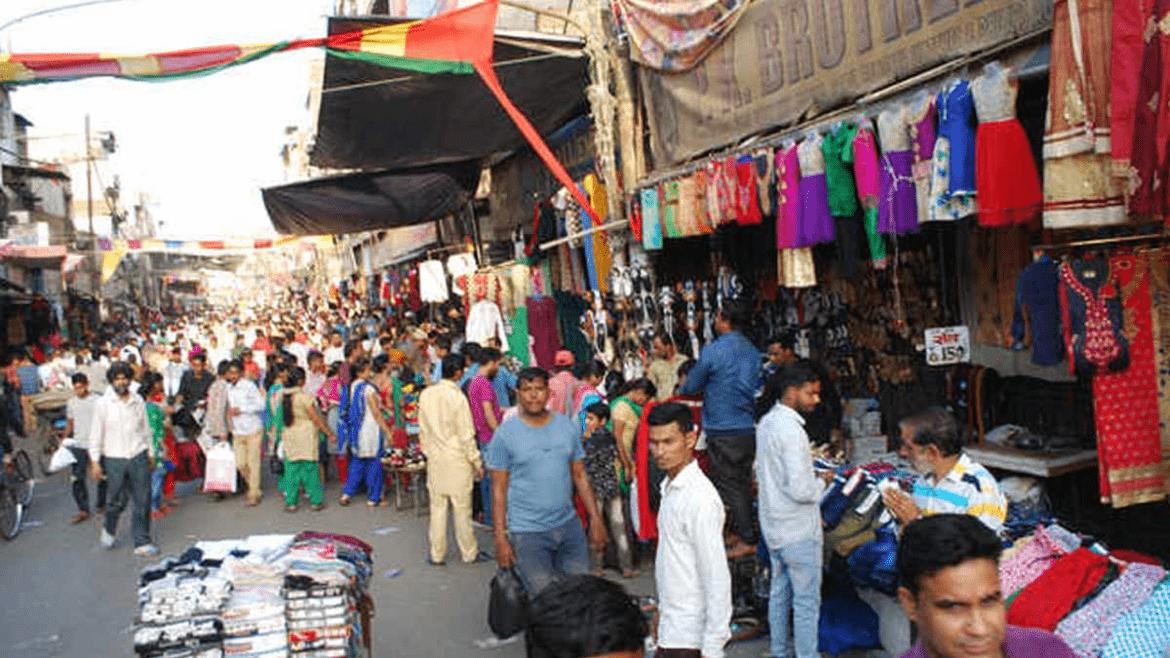AI Generated Summary
- The unique names and the enduring charm of these markets make them a beloved part of Ludhiana’s urban landscape—a living legacy that promises to endure for generations to come.
- that while modernity is inevitable, the flavors and experiences that define Ludhiana’s culinary heritage continue to hold a special place in the hearts of its residents.
- The persistence of these traditional market names and their associated trades offers more than just a glimpse into the past—it presents a vibrant mosaic of cultural continuity amidst rapid urban development.
In the bustling industrial city of Ludhiana, the spirit of tradition still thrives within its interconnected network of markets. Despite decades of transformation and modernization, many of these bustling commercial hubs proudly retain the names of yesteryears—each one echoing a unique story of the city’s vibrant past.
Strolling through the interior areas of Ludhiana reveals a patchwork of markets such as Saban Bazaar, Kambal Bazaar, Ghas Mandi, Light Bazaar, Kitaban Wala Bazaar, Namak Bazaar, Kesar Ganj Mandi, and Trunk Bazaar. These names, once directly tied to the specialized goods sold in each locale, continue to be the city’s hallmark even as the merchandise has evolved.
Avinash Kumar, an octogenarian resident whose memories span decades, recalls a time when these markets were more closely linked to their original trades. “In Ghas Mandi, fodder for animals was sold,” Kumar reminisces. “Over time, new shops have emerged, yet the market’s name remains unchanged. Even though few people use luggage trunks nowadays, there are still shops in Trunk Bazaar that repair old trunks and offer new ones.” His words paint a picture of a community where tradition and modernity intersect—a testament to Ludhiana’s enduring cultural fabric.
A similar sense of continuity is evident among other market-goers and shop owners. A proprietor in the Kesar Ganj complex highlighted the market’s sustained reputation. “Even today, Kesar Ganj Mandi is famous for selling spices, tea, and other essentials. All kinds of spices are available at the mandi at reasonable prices, and retailers flock here to purchase in bulk.” This enduring popularity, even in an age dominated by globalized supply chains, speaks volumes about the trust and loyalty that local residents place in these establishments.
Equally fascinating is Saban Bazaar, where customers can purchase a variety of soaps by the kilogram—a nod to the market’s historic connection to everyday necessities. Meanwhile, Light Bazaar continues to be the go-to destination for lighting enthusiasts, offering everything from Chinese imports to ornate chandeliers. Such specialized offerings ensure that while the products may have changed, the essence of each market remains rooted in its original character.
Not only do these markets provide essential goods, but they also serve as living museums of local commerce and culinary art. Among the highlights are the many sweet-meat shops that have become cultural icons in their own right. Names such as “Pandit ke paranthe”, “Jhandu poori wala”, “Deepe di lassi”, “Ghuddu da bhugga”, “Shudh mishthan barfi”, and “Khushi ram ke laddoo” evoke nostalgic memories and are spoken of with reverence by locals.
For many, these sweet shops are more than just places to purchase a treat—they are a part of family traditions and daily rituals. Karan, a young gym enthusiast with a taste for tradition, confesses, “On cheat days, I never miss having ‘Jhandu ki poori with Deepe di lassi.’ My father says that the taste and authenticity of these delicacies has remained unchanged over the years.” His comment underscores a broader sentiment in the community: that while modernity is inevitable, the flavors and experiences that define Ludhiana’s culinary heritage continue to hold a special place in the hearts of its residents.
The persistence of these traditional market names and their associated trades offers more than just a glimpse into the past—it presents a vibrant mosaic of cultural continuity amidst rapid urban development. In a world where change is the only constant, Ludhiana’s markets stand as a reminder that some traditions are too cherished to let go.
As the city continues to evolve, both locals and visitors find comfort and a sense of identity in these storied markets. They not only represent the commerce and creativity of a bygone era but also illustrate how history and heritage can coexist with modernity. The unique names and the enduring charm of these markets make them a beloved part of Ludhiana’s urban landscape—a living legacy that promises to endure for generations to come.




